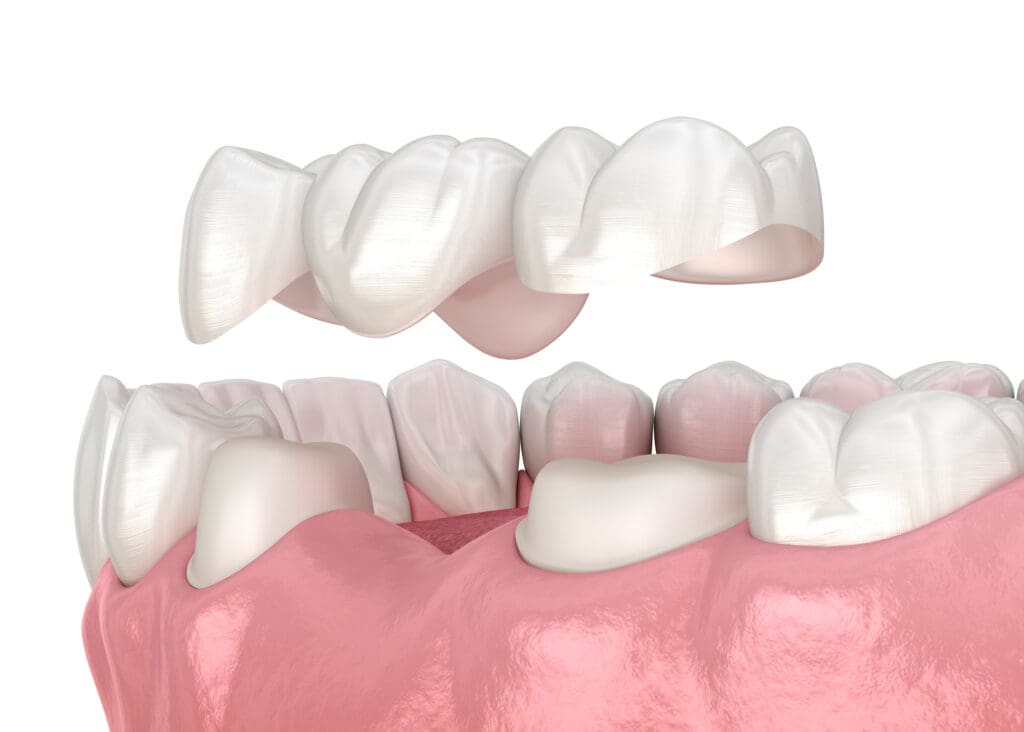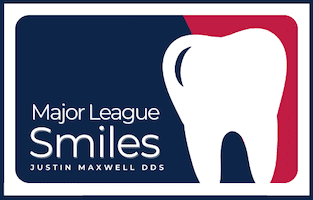A dental bridge is a common dental restoration procedure used to replace one or more missing teeth. This dental appliance bridges the gap created by missing teeth. A typical bridge consists of two or more crowns on either side of the gap, known as abutment teeth, and a false tooth or teeth in between. As a form of restorative dentistry, bridges help restore function and aesthetics for patients with missing teeth.
The purpose of a dental bridge is to restore your smile, improve chewing function, and maintain the shape of your face. They also prevent remaining teeth from drifting out of position. Dr. Justin Maxwell can place a dental bridge to help you regain your confidence and oral health.

Types of Dental Bridges
There are several types of dental bridges available. The most common type is the traditional dental bridge, which is made of either porcelain fused with metal or ceramics. Another option is the cantilever bridge, which is used when there are adjacent teeth on only one side of the missing tooth or teeth. Additionally, Maryland-bonded bridges, also known as resin-bonded bridges, use a metal or porcelain framework bonded to the back of the adjoining teeth.
Dr. Maxwell can also use dental implants to replace a single missing tooth or to secure a dental bridge. This alleviates the need to place dental crowns on either side and leaves adjacent healthy teeth intact. Each type of bridge has advantages and limitations, so it is essential to consult Dr. Maxwell for the best option that suits your needs.
Am I A Candidate for A Dental Bridge?
Not everyone is a candidate for a dental bridge. To determine if you are eligible, Dr. Maxwell will evaluate your oral health. Candidates typically need to have healthy teeth on either side of the missing tooth or teeth. These abutment teeth must be strong enough to support the bridge. Additionally, candidates should have good overall oral health, as conditions like gum disease can affect the success of the bridge.
Maintaining good oral health is crucial when considering a dental bridge. Healthy gums and teeth are necessary for the longevity and success of the dental bridge. Regular check-ups with Dr. Maxwell can help ensure that your mouth is in optimal condition for the procedure. In addition to professional care, daily oral hygiene practices such as brushing and flossing are vital.
Dental Bridges: Procedure and Aftercare
The procedure typically involves two to three visits to Dr. Maxwell’s office. During the first visit, the abutment teeth are prepared by removing a portion of enamel to make room for the crowns. Impressions of your teeth are then taken to create the bridge, pontic, and crowns.
A temporary bridge is placed to protect the exposed teeth and gums while the permanent bridge is being made. On the subsequent visit, the temporary bridge is replaced with the permanent bridge, which is then adjusted for a proper fit. If necessary, additional visits may be required to ensure the bridge fits comfortably.
After receiving your dental bridge, some time for adjustment may be necessary. It is normal to experience slight discomfort or sensitivity initially. Dr. Maxwell will provide specific aftercare instructions to help you manage any discomfort and ensure proper healing.
Regular dental visits are essential to monitor the condition of the bridge and your overall oral health. To maintain your dental bridge, it is important to practice good oral hygiene, including brushing twice a day and flossing daily. Special floss can be used to clean under the bridge to prevent the buildup of plaque.
